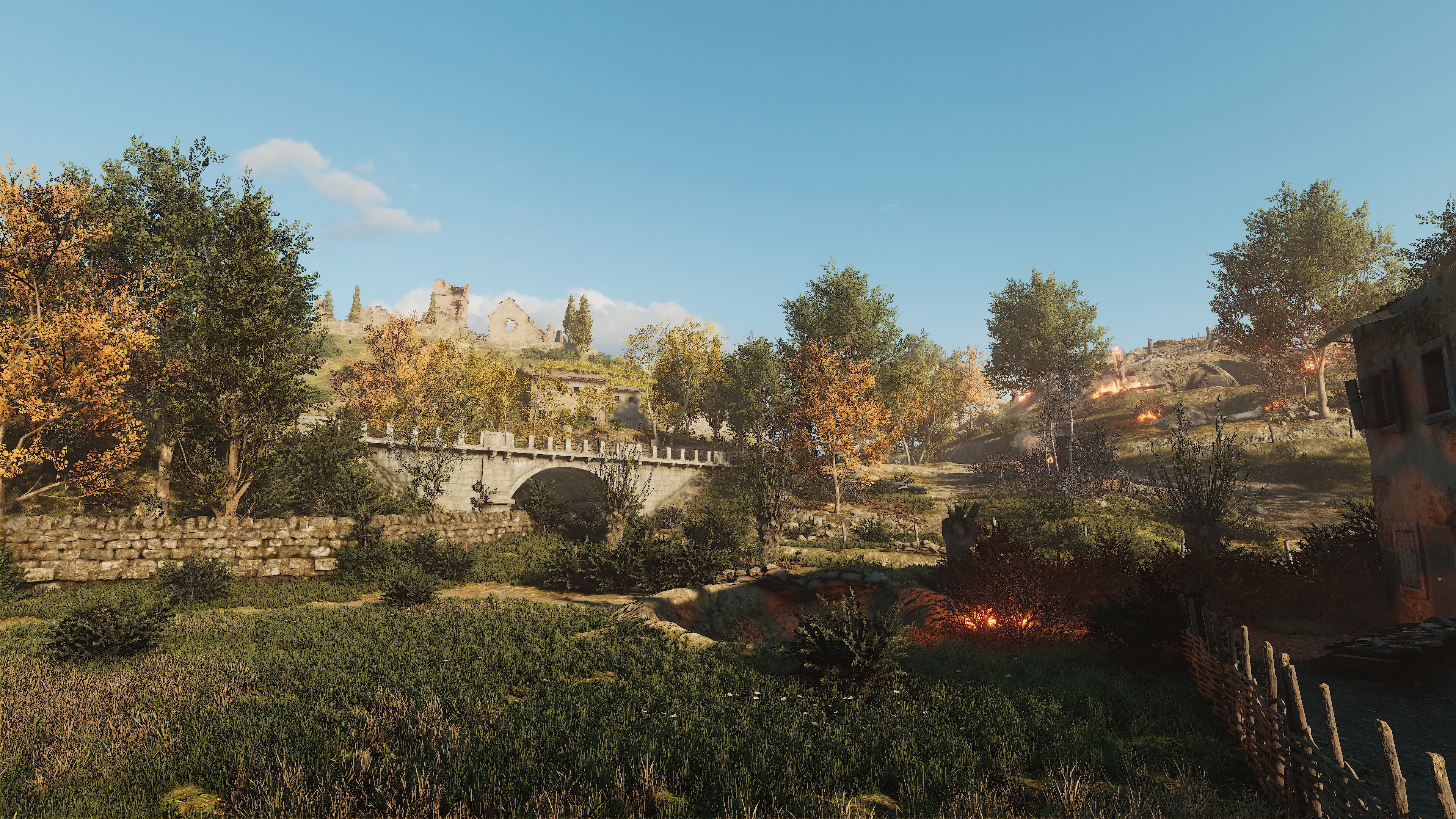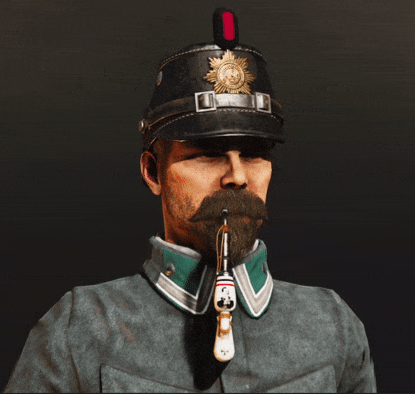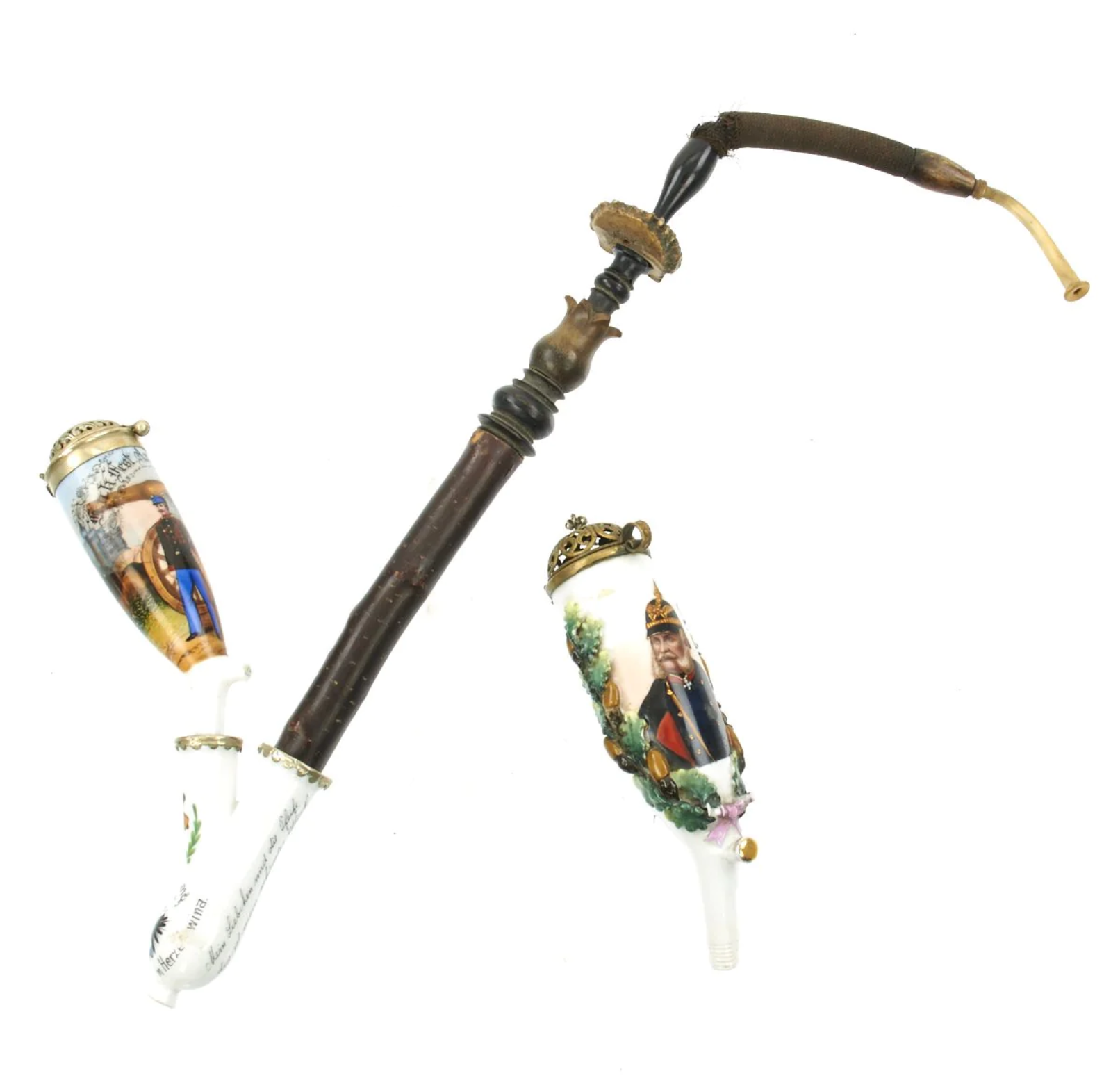Hello soldiers !
The dev team is working hard on the upcoming map that was teased in the last devblog!
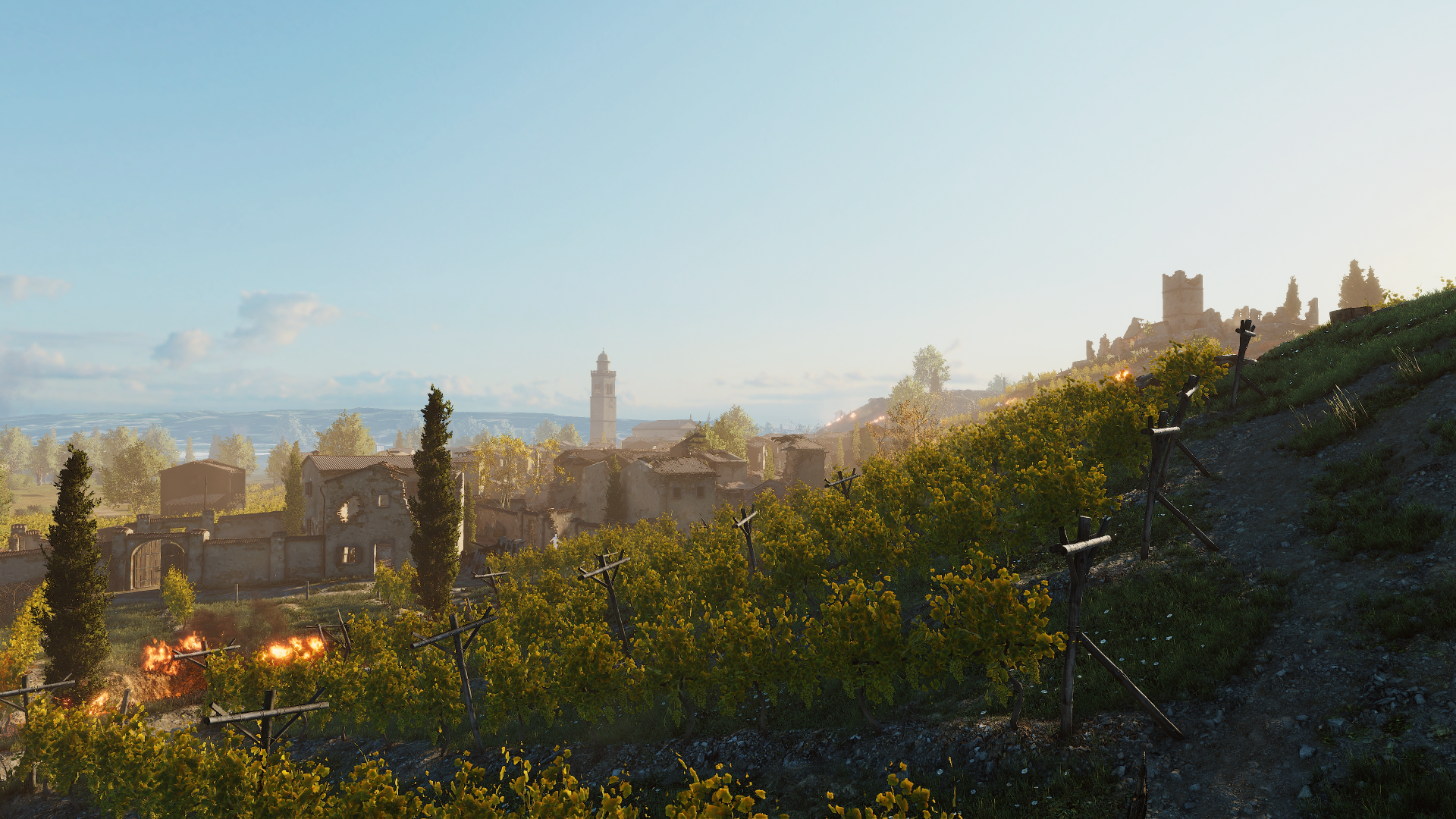
We can’t reveal yet what the map is going to, but some of you have guessed correctly. Do with that information what you want ;) Once we get more information for you to share, we’ll be sure to post a devblog about it as well. For now, we want to dive into some of the items that are included in the Royal Units DLC, which is the cosmetic pack for the German Empire.
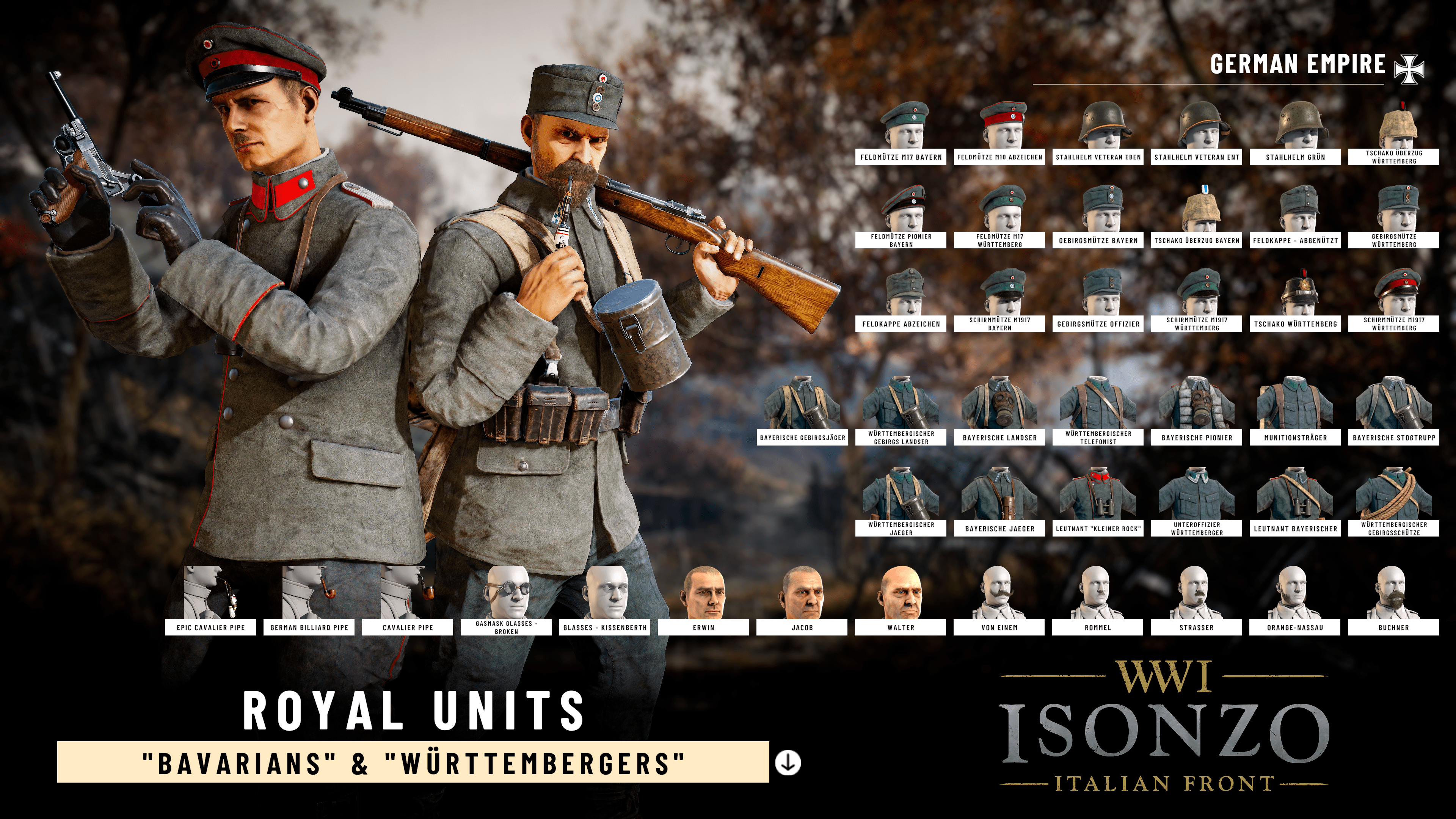
An interesting headpiece
One of the headgears that you’re able to equip is the Tschako Württemberg.
A Tschako (shako) is a tall, cylindrical military cap, usually with a visor, and sometimes tapered at the top. Adorned usually with an ornamental plate/badge on the front, metallic and at the top (at the front), there’s often feather, plume or pom pom attached to the Tschako.
Its origin lies in the Hungarian name ‘csákó ’meaning peak. Around 1790, the Austro-Hungarian border soldiers (Grenz-Infanterie) added the Tschako to their equipment. Originally these hats were part of the clothing commonly worn by shepherds, before being added to the uniform of the hussar in the early 18th century.
For the German Empire, the Tschako was the most commonly worn helmet before the introduction of the Pickelhaube in 1842. Even during the Napoleonic wars until well into the 1800s. With the introduction of the Pickelhaube, the Tschako got a more refined shape and was eventually worn by the Jäger Schützen, Telegraph, Train (Supply) and several other (small) units.
As previously mentioned, the Tschako was often a feather or plume at the top of the helmet. In German, this was called a ‘Feldzeichen’ (field sign). They came in different colours and variations. Here’s an overview of the most commonly used ones.
- Braunschweig, Husaren and Jäger.
- Bayern (Bavaria), Aviation Troops, Jäger, Telegraphen (Telegraph), and Ulanen.
- Sachsen (Saxon) Train (up to 1903).
- Sachsen (Saxon), Aviation Troops, Husaren, Maschinengewehr (Machine Gun), and Ulanen.
- Preußen, Aviation Troops, Husaren, Jäger, Maschinengewehr (Machine Gun), Telegraphen (Telegraph), Train (up to 1903), and Ulanen.
- Württemberg Telegraphen (Telegraph), Train (up to 1903), and Ulanen.
The emblem that was attached on the front came with different variations. During the 1800s, most of them portrayed an eagle, which had different styles and variations over the years.
In 1860, a new Garde star was introduced to the Tschako with the text ‘Mitt Gott für König und Vaterland (With God for the King and Fatherland), combined with the adoption of the Bandeau with the same text.
In the game you can find the Württemberg Tschako, which is a very rare item for the elite unit in the Württemberg army, also known as the Mountain Troops. The text reads ‘Furchtlos und Treu" which means fearless and loyal.
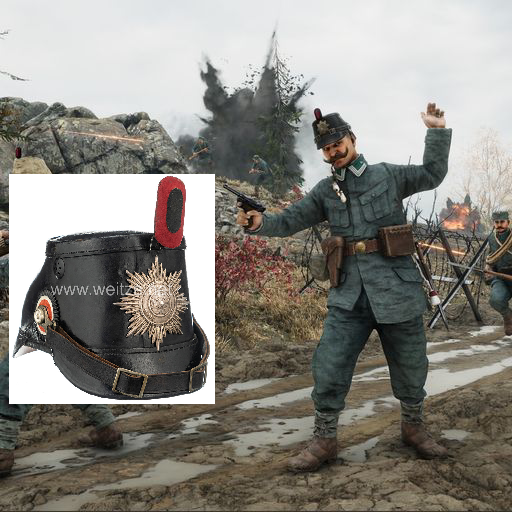
Other examples of Tschako plate emblems include the coat of arms of many of Germany’s city states.
The Tschako continued to evolve and was present during World War Two for Germany, portraying the swastika. Nowadays, several countries use their own Tschako mostly for ceremonial purposes.
Piping hot item
One of the visually outstanding items in this pack are the Cavalier Pipe and especially the Epic Cavalier Pipe. Smoking during WW1 was a common practice amongst the soldiers. Soldiers were often sent tobacco and cigarettes from home or even by their country’s leader during Christmas as a present.
A cavalier pipe is a special kind of pipe. It’s based on the older Tyrolean pipes that originate from Germany. The cavalier pipe is more of an unusual pipe because of its airhole system. The airhole of the pipe in the shank goes all the way past the bowl ,where the tobacco is inserted, and is capped. This way the smoke can travel from the bowl through a hole that joins the airhole. This design allowed for more moisture to be collected in the airhole, adding more flavor and an overall better experience.

The Epic Cavalier Pipe is more decorated. Often there were small drawings of high military figures on them, which could differ from the regiment. Soldiers usually got these made after their service, becoming a memorial keepsake.
A unit of men stayed together from their training all the way to their discharge as a unit. This sense of togetherness fostered the custom of buying souvenirs with the unit name, insignias and decorations as a keepsake of military service. Rosters of names from your unit, or regiment, could be added to the steins and these became known to collectors as ‘regimental steins’.
Erwin Rommel
Most of you noticed the face named ‘Erwin’ and the moustache ‘Rommel’, which of course refers to Erwin Rommel.
Johannes Erwin Eugen Rommel was born on November 15, 1891. He served in the Reichswehr during WW1 and later Wehrmacht during WW2. He received the ‘Pour le Mérite’ which is an order of merit, established by King Frederick II of Prussia. He received this for his actions on the Italian Front, which he later wrote a book about; Infantry Attacks.
Prior to his deployment to the Italian Front, Rommel had fought in France and Romania.
His first combat experience was on 22 August 1914 as a platoon commander near Verdun. He caught a French garrison unprepared, which led Rommel and three other men to open fire on them without ordering the rest of his platoon forward. The armies continued to skirmish in open engagements throughout September, as trench warfare, which WW1 is known for, was yet to fully establish.
In August 1917, Rommel and his unit was involved in the battle for Mount Cosna, a heavily fortified objective on the border between Austria-Hungary and Romania, which took over two weeks of difficult uphill fighting. Being a Mountain Battalion, their next assignment was the mountainous area of the Isonzo Front. Taking part in the Battle of Caporetto on October 24, 1917, Rommel’s battalion contained three rifle companies and a machine gun unit. Their objective was to (try) take the enemy positions on Kolovrat, Matajur and Stol. In two and a half days after the start, Rommel and his 150 men captured 81 guns and 9,000 men (including 150 officers), at a loss of six dead and 30 wounded. Rommel achieved this remarkable success by taking advantage of the terrain to outflank the Italian forces, attacking from unexpected directions or behind enemy lines, and taking the initiative to attack when he had orders to the contrary.
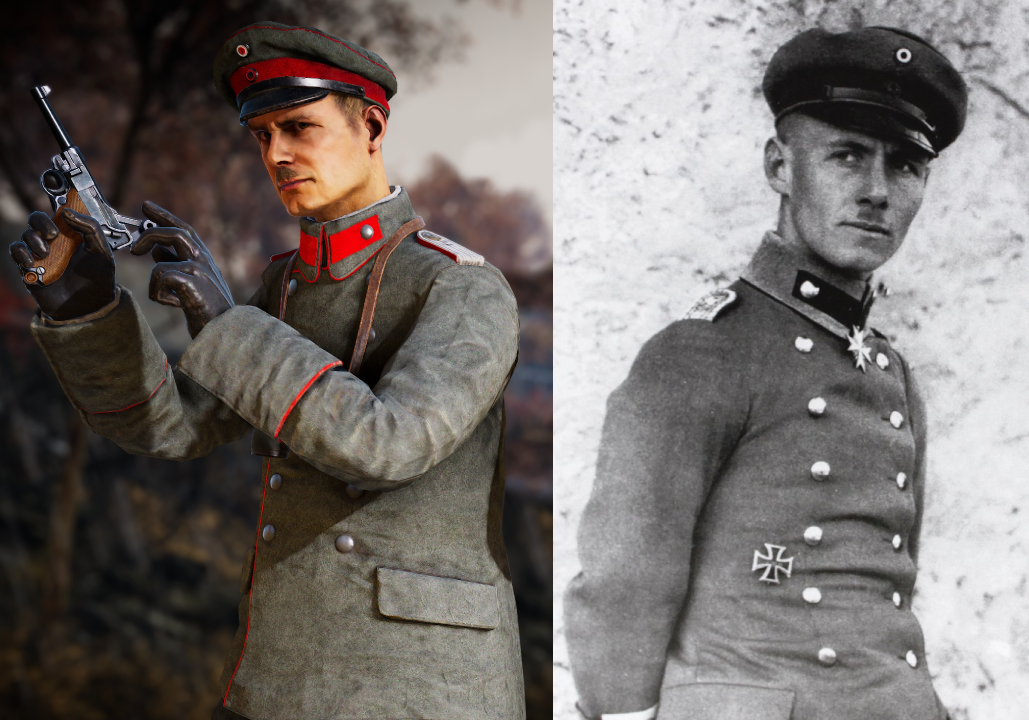
Rommel helped with the introduction of infiltration tactics, which were at the time a new form of maneuver warfare, freshly adopted by the German armies. Seeing the success of these new tactics, these were quickly adopted by foreign armies. Rommel’s tactics were often described by Blitzkrieg without tanks.
On the 9th of November, Rommel and his unit acted as an advance guard to capture Longarone. He decided again to attack with a small force, since it has been proven to be a successful tactic. The 1st Italian Infantry Division, consisting of 10.000 men, thought they were surrounded and surrendered to Rommel.
In January 1918, Rommel was promoted to Hauptmann (captain) and assigned to a staff position in the 64th Army Corps, where he served for the remainder of the war.
He died on October 14, 1944 by commiting (forced) suicide as being involved (allegedly) with the military resistance against Hitler.
Another teaser
As said before, we’re working hard on bringing you a new map to fight on ! Here’s another sneak peek image for you all. Can you make a better guess now?
